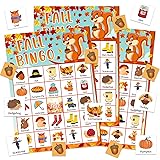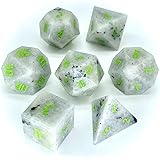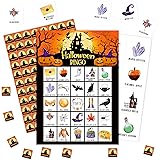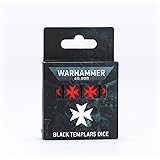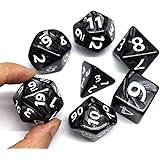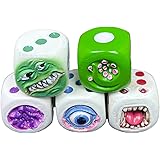The exhilarating world of casino gaming, as showcased in the video above with a high-stakes $4,000 blackjack hand celebrating the Fourth of July, offers both immense excitement and strategic depth. While the video captures the thrill of the moment, seeking “four double downs or four splits,” understanding the fundamental aspects of blackjack is essential for anyone looking to enjoy this classic card game, whether at home or in a bustling casino environment.
Understanding the Basics of Blackjack: A Beginner’s Guide
Blackjack, often referred to as ’21’, is one of the most popular card games played in casinos worldwide. The primary objective of playing blackjack is straightforward: to have a hand total closer to 21 than the dealer’s hand, without exceeding 21. Each card holds a specific value: numbered cards are worth their face value, face cards (King, Queen, Jack) are worth 10, and an Ace can be counted as either 1 or 11, whichever is more advantageous for the player’s hand.
When you commence a game of blackjack, both you and the dealer receive two cards. One of the dealer’s cards, known as the ‘up-card,’ is visible, while the other remains face down. Your initial decision in any blackjack hand hinges significantly on the value of your first two cards and the dealer’s exposed card. This initial assessment forms the bedrock of basic blackjack strategy.
Key Player Actions in Blackjack: Hit, Stand, Double Down, Split
The dynamic nature of blackjack arises from the various actions a player can take during their turn. The player in the video mentions hoping for “four double downs or four splits,” highlighting some of the more advanced yet crucial moves in the game. Let’s delve into these core actions:
- Hit: To ‘hit’ means requesting an additional card from the dealer. Players typically choose to hit when their current hand total is low, and they believe another card will bring them closer to 21 without going over. For instance, if you have a hand totaling 12 and the dealer shows a 7, hitting might be a prudent move.
- Stand: To ‘stand’ means to decline any further cards and keep your current hand. This action is taken when you are satisfied with your hand’s total, or you believe drawing another card would likely result in ‘busting’ (exceeding 21). As the player in the video suggests, saying “I would stay on that,” indicates a strategic decision to stand based on their hand’s strength.
- Double Down: This exciting move allows you to double your initial bet in exchange for receiving only one more card. You can only double down after your initial two cards are dealt. It’s a powerful option when you have a strong starting hand, typically a total of 9, 10, or 11, and the dealer’s up-card is weak. For example, if you have an 11 and the dealer has a 6, doubling down significantly increases your potential winnings.
- Split: When your initial two cards are a pair (e.g., two 8s or two Aces), you have the option to ‘split’ them into two separate hands. You must place an additional bet equal to your original wager for the new second hand. Each hand is then played independently. Splitting pairs, particularly Aces and 8s, is a cornerstone of effective blackjack strategy, as it often turns a weak single hand into two potentially strong ones.
Other actions, though not mentioned in the brief video, include ‘surrender’ (giving up half your bet to fold a weak hand) and ‘insurance’ (a side bet offered when the dealer’s up-card is an Ace, betting that the dealer has blackjack).
The Dealer’s Role and the Thrill of the Game
In any casino blackjack game, the dealer, like “Daryl” mentioned in the video, plays a crucial role. However, it’s important to recognize that the dealer does not make strategic decisions in the same way players do. Dealers adhere to strict house rules, which typically dictate that they must hit on any hand totaling 16 or less and stand on all hands totaling 17 or more (though some variations exist, like hitting on a ‘soft 17’ which includes an Ace). This consistency is what allows players to develop and apply basic strategy effectively.
The “patented flip” mentioned in the video refers to a dealer’s individual style or flourish when dealing cards, adding to the entertainment value of the game. While the dealer’s actions are governed by rules, their presence and demeanor contribute significantly to the overall casino experience.
High Stakes and Holiday Celebrations
The video’s context of a “$4,000 hand celebrating the Fourth of July” perfectly encapsulates how special occasions can elevate the casino experience. Playing blackjack with higher stakes can intensify the excitement and potential rewards, making a holiday celebration even more memorable. Whether it’s the Fourth of July, New Year’s Eve, or a birthday, combining the thrill of casino games with festivities adds an extra layer of enjoyment. However, it also underscores the importance of responsible gaming.
Developing Basic Blackjack Strategy for Better Play
For beginners, grasping basic blackjack strategy is not about complex card counting, but about making mathematically optimal decisions for every hand against the dealer’s up-card. This involves understanding the odds and making choices that minimize the house’s edge. While complex strategy charts exist, a few simple rules can significantly improve your play:
- Always split Aces and 8s.
- Never split 10s or 5s.
- Always hit if your hand is 11 or less.
- If you have 17 or more, always stand.
- Double down on 11, unless the dealer has an Ace.
- Consider doubling down on 10 if the dealer’s up-card is 2 through 9.
These guidelines are designed to help you make informed decisions, transforming blackjack from a purely luck-based game into one where skill and strategy play a significant part.
Responsible Gaming and Bankroll Management
Engaging in blackjack gambling, especially at higher stakes like the $4,000 hand shown, requires a strong emphasis on responsible gaming. It is paramount to approach any form of gambling as entertainment, not a guaranteed source of income. Effective bankroll management is a key component of this. A ‘bankroll’ is the amount of money you set aside specifically for gambling, which you are prepared to lose.
Before you begin playing blackjack, establish a clear budget for your session and stick to it. Never chase losses, and recognize that even with optimal strategy, the house still maintains a slight edge. Taking breaks, understanding when to stop, and not allowing the excitement of the moment (like a holiday celebration) to override your financial limits are crucial for a healthy and enjoyable gaming experience.
Ultimately, whether you’re playing a casual hand or engaging in a high-stakes blackjack game, the objective is to have fun responsibly. By understanding the game’s mechanics, employing basic strategy, and managing your funds wisely, you can fully appreciate the excitement that casino card games like blackjack offer.


